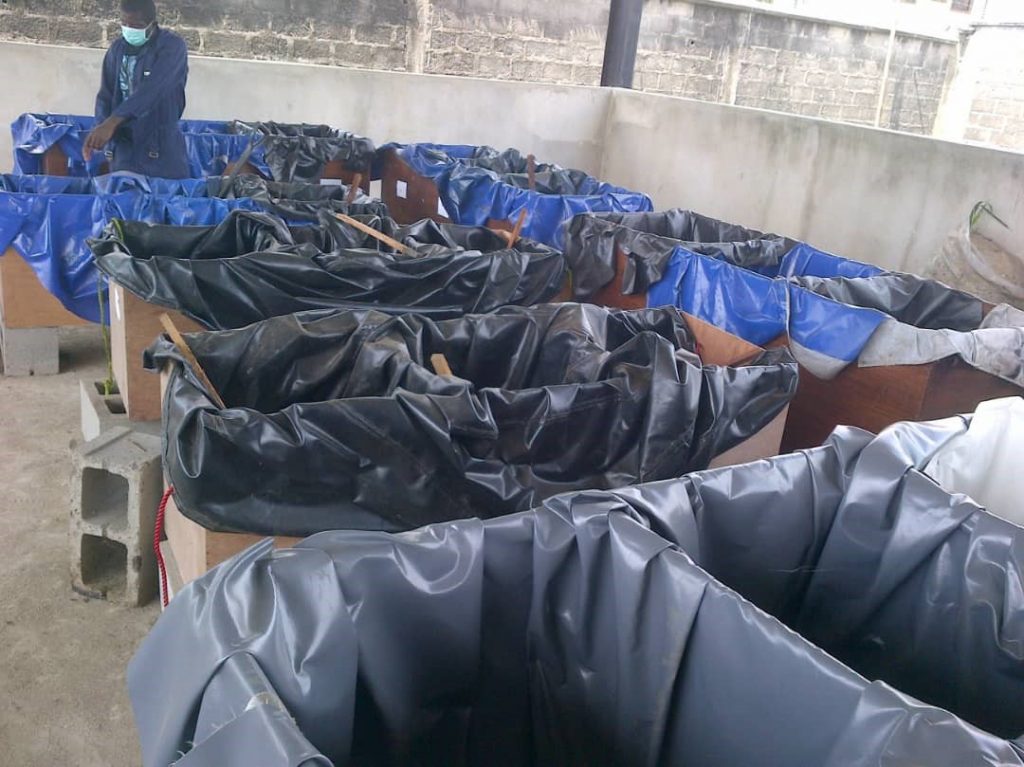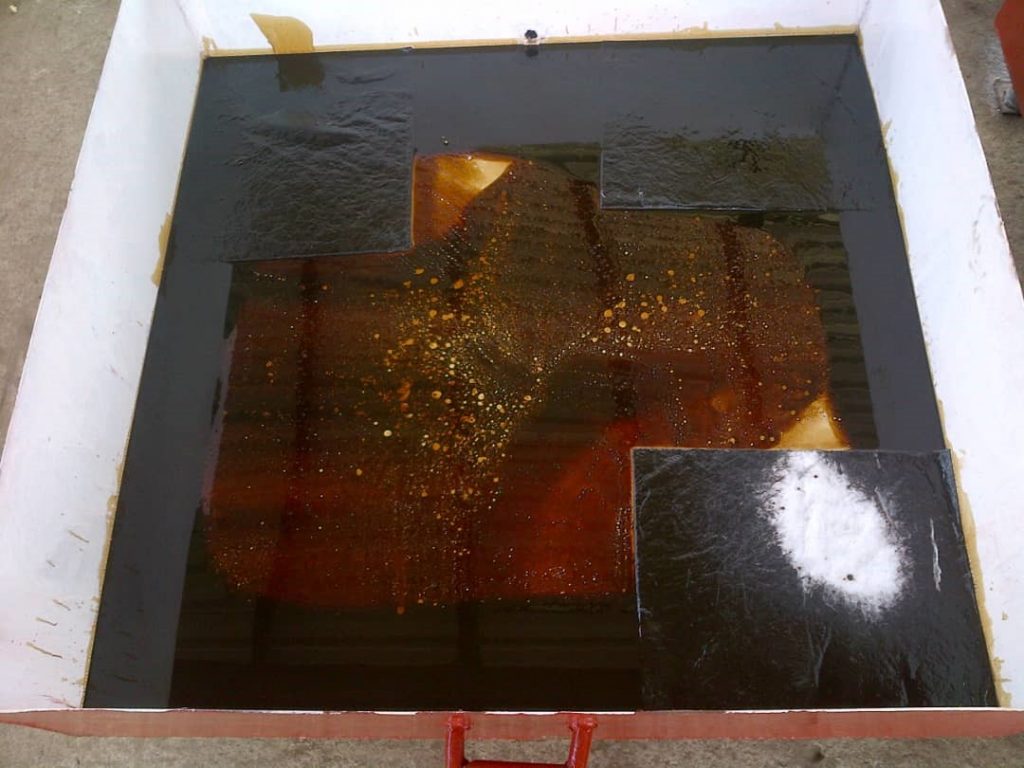‘Nigeria needs nature-based solutions for environmental remediation’

Godleads Omokhagbor Adams is an Environmental Practitioner with over 10 years of industry experience. He has worked in the Contaminant Land Management sector with a focus on pollution studies and ecotoxicology. He has written several papers on the remediation of crude oil impact and related topics. He provides mentorship and academic support to Postgraduate students studying in Nigeria.
He spoke to Omolola Afolabi about his work, challenges and the prospects of the industry on the environmental remediation in Nigeria. Excerpts:

Why did you decide to pursue a career in environmental management?
Having completed my first degree in microbiology, I discovered microorganisms could be employed in nature-based technologies for reducing complex hydrocarbons to simpler easily assimilable biomass, or to be used in degrading complex pollutants, or even be processed as food sources as in Single Cell Proteins for human consumption
I became fascinated by the possibilities of microorganisms long associated with spoilage, diseases, and infections to help the environment positively. There were few practitioners in this discipline and their stories of how bad the environmental pollution from crude oil in the Niger Delta forged my resolve to contribute to finding solutions that will improve the industry in Nigeria.

So, has the solution been found?
If I have found the solution, I will not be here today (laughs). However, it is important to first understand what the problems are and to determine what part of the value chain requires the most focus before we discuss the role we have played. Now in Nigeria, there is enormous contamination all over the Niger Delta. This is no news but it certainly requires attention. There are spill episodes that have contaminated expanses of more than the size of 20 football pitches combined. We are talking hectares of land covered with crude, farmlands, rivers, and swamp locations stained with crude oil. The devastation to plants and animals and vegetation cannot be overstated. When you consider that humans live near these areas and obtain their food and livelihood from there, then the picture becomes clearer.
So how exactly did we get here?
It starts from the pre-development of oil facilities and their engineering designs, locations, pipeline routes, and the environment they crisscross. At the conceptualization stage, environmental managers are relevant in determining the baseline conditions of the environment before installations even commence. The baseline compared to the allowable contaminant limits in regulations help document the environment’s status and serves as a reference for assessing the impact when the production commences.
Upon commencement of utilisation of the facilities, it is important to ensure asset integrity including pipelines, storage facilities, pressure valves, and others. Ideally, frequent environmental assessments or monitoring is required to ensure no significant environmental impact has occurred owing to contamination. Importantly, surveillance of the facilities and the routes, remote monitoring for pipeline pressure, and other spill detection measures.
These are necessary to avoid spills in the first place but also to report them and act as quickly as possible. Finally, there is environmental intervention and clean-up when spills occur to try to restore the environment to previous conditions. The problem in Nigeria is a result of the failure of one or more of these barriers multiple times too. Although most spills are attributed to sabotage, it is not rare to find some due to operational failure and then a failure to immediately respond to the spills.

So, which of these value chains do you work in and why is it important?
I studied as an Environment Manager with a focus on pollution studies and ecotoxicology. So, it is the environmental clean-up and remediation value chain. My doctorate research focused on finding sustainable nature-based solutions for environmental remediation. When I say nature-based, I mean readily available nutrient sources that will help promote microbial growth and consequently, the utilisation of crude oil as an energy source leading to their breakdown into simpler constituents.
I have been lucky to work in the industry where I have tested these agents with various degrees of success. I will highlight this briefly. If you have read the UNEP report and the recommendations for environmental clean-up, it encouraged improving the remediation processes currently being deployed and also expanding the suite of available techniques in the country. This was an immediate opportunity for me. Firstly, I led a Company that commissioned research into the existing remediation products in the Country and the current practice in the industry. This comparative study was to help understand or vet whatever approach was being used in the industry and to propose better solutions.
The report indicated that whereas the companies were using techniques like land farming, bioremediation, physical clean-up, and processes that looked simple, they were indeed effective. But importantly, it showed that other options tested could be implemented to achieve a higher level of decontamination at a relatively cheaper price. Because the options were nature-based and readily available, they could be categorized as sustainable solutions and will provide economic opportunities for practitioners in that space almost forever.

You talked about the UNEP report, can you talk about other recommendations made and where we are currently?
I would like not to be specific on the extent of the clean-up or the success of the process and the implementation of the report properly. However, I can talk about the recommendations and what is publicly available.
There was a recommendation not to commence clean-up until all pollution sources were discontinued. This alludes to my initial comment on avoiding pollution as a first step. There was a recommendation for the environmental restoration of swamp areas. I will expand on this briefly.
You know, whenever there is a major clean-up exercise on land and swamp locations, the implementation of the civil works in Nigeria always leads to the clearance of a large expanse of land and then difficulty for the environment to regenerate. It takes years to have shrubs and foliage and more years to have trees established.
One of the projects I worked on, studied the restoration of contaminated sites post-environmental remediation works. This study was necessary to help to understand the biology behind restoration following contamination, assuming residual impact remains and how much damage the actual clean-up does to the environment. The intention was to see if the industry practice can be modified from an ecological risk perspective to limit the intrusiveness of remediation efforts.
Assuming an expanse of contaminated land is not posing an immediate risk to the environment, aquatic life, or humans, the efforts can be limited to clean-up and prevent tree felling and large clearance. Now, the discussion will culminate in influencing regulation in Nigeria by leveraging such studies. As you may be aware, it is not easy to change regulations especially when there is no immediate incentive to do this.
The last update to the Environmental Guidelines and Standards in the Petroleum Industry in Nigeria was in 2018 and before then, the version was in 2002. This version in itself was largely modelled around the Dutch standards done in the 90s. So, to find opportunities to influence a change in the Regulations requires rigorous science and stakeholder buy-in.
This sounds like a lot. What else was recommended?
I see this interests you. I will talk about the recommendation for an integrated management approach for contaminant land management. This recognizes that no one approach is sufficient across all environment types. It means the industry can study and adapt more efficient tailor-made solutions specific to each site. We did work on comparing products and techniques for use in the country and really, that study can help us understand the requirements for each site, the shortcoming of each technique, and the opportunities for improvement.
Hopefully, another UNEP recommendation to set up a centre of excellence can provide opportunities for science-based research into the practice. Incidentally, I have been involved in some work within a centre of excellence promoted by a company I worked for that truly supported research. That centre was equipped to support research and students were properly trained.
There was a project on the fixation of contaminated soils as a way of utilizing highly carbonated soils for blockmaking. This received regulatory approval as a technique for managing pollution. Similar studies I participated in were the testing of absorbents used in oil spill clean-up, which supported the change of suppliers to better products for the Company, and the testing of treated soils for their abilities to support plant growth so that when soils are treated, they could be used for cultivation of plants which would lead to further breakdown of whatever residual contaminants exist. This is assuming all health risks around the bioaccumulation of contaminants are isolated. And a lot more studies are still ongoing today.

Finally, in the recommendations, there was an emphasis on monitoring. This is another area or discipline completely and can be an area of expertise. Environmental monitors will be responsible for ensuring compliance with regulations and for promoting continuous improvement. Remember the baseline establishment mentioned as part of the pre-development processes.
This is good as it brings me to the subject of technology in Environmental Management and what options are available
This is a revolution as with other disciplines currently enjoying the impact of technology. Using GIS-based solutions, we can now develop applications that monitor site regeneration and recovery over many years. The presentation can be seen several countries away. Today, it is possible to include remote sensing in site characterization and assessment using aerial photography, geo-penetrating radar, and resistivity imaging. Amazingly, studies are already exploring nanotechnology and nanoparticles for groundwater contamination remediation. Remediation progress and the influence of nature on the process can be monitored using remote sensors with automated monitoring systems.
Finally, it is now possible to use unmanned aerial vehicles or drones to carry out site surveillance with the possibility of cutting project logistics costs and safeguarding people and property. Because in the end, managing scarce resources is key to a successful project outcome. You see, there is a lot that can be done within the practice.
Please enable JavaScript to view the comments powered by Disqus.



